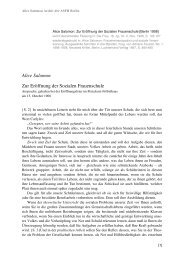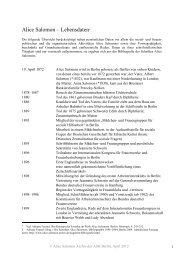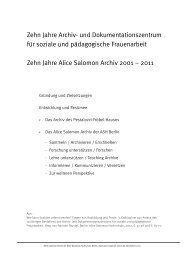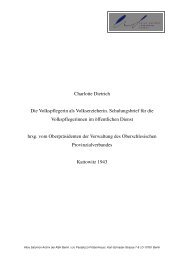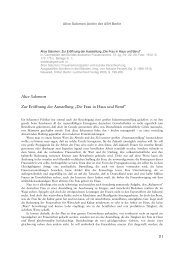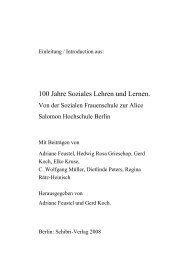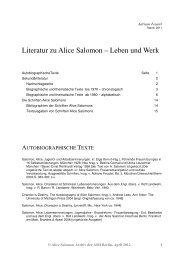Teaching Gender in Social Work - MailChimp
Teaching Gender in Social Work - MailChimp
Teaching Gender in Social Work - MailChimp
You also want an ePaper? Increase the reach of your titles
YUMPU automatically turns print PDFs into web optimized ePapers that Google loves.
In the 1930s female teachers and advisers managed to build a broad<br />
network for observ<strong>in</strong>g child health <strong>in</strong> the home, to spread modern standards of<br />
child rear<strong>in</strong>g among mothers <strong>in</strong> the villages, and to enforce social control over<br />
the rural population. In their reports they told how they ga<strong>in</strong>ed access to family<br />
homes, how they managed to communicate with mothers and how fathers<br />
were sceptical at the beg<strong>in</strong>n<strong>in</strong>g but then tended to accept advice. Us<strong>in</strong>g the<br />
standards they had received <strong>in</strong>struction about, the female teachers and advisors<br />
presented <strong>in</strong> their reports images of rural homes <strong>in</strong> poverty, the lack of modern<br />
order and hygiene and their efforts to <strong>in</strong>struct mothers.<br />
Through the work <strong>in</strong> the villages of female teachers and advisors, undertaken<br />
<strong>in</strong> tandem with the work of the visit<strong>in</strong>g nurses and “Samarjanka”<br />
volunteers <strong>in</strong> urban areas, home visit practice had been generally established<br />
<strong>in</strong> Bulgaria by the late 1920s as a female activity of professional visit<strong>in</strong>g nurses<br />
and tra<strong>in</strong>ed volunteers. They elaborated and established rules and practices of<br />
communication to the poor population <strong>in</strong> town peripheries and distant villages<br />
and traced the way for visit<strong>in</strong>g practices as a key method of professional social<br />
work <strong>in</strong> the 1930s.<br />
Questions for students:<br />
1. Why did the Bulgarian Child Protection Union need to prepare<br />
women separately for home visits <strong>in</strong> the villages?<br />
2. Why were female teachers chosen?<br />
3. What were their ma<strong>in</strong> duties as female teachers and advisors?<br />
What personal qualities did they have to develop?<br />
4. What were the most important social problems <strong>in</strong> rural areas <strong>in</strong><br />
the Balkans at that time?<br />
5. What did female teachers and advisors manage to do for the<br />
situation of children and mothers <strong>in</strong> the villages?<br />
The <strong>Social</strong> High School for Women of the Bulgarian Women’s Union<br />
In 1932, the Bulgarian Women’s Union opened a female preparatory course<br />
for social work, which became <strong>in</strong> the follow<strong>in</strong>g year a <strong>Social</strong> High School<br />
for women. It was based on the model of Alice Salomon’s Women’s <strong>Social</strong><br />
Academy <strong>in</strong> Berl<strong>in</strong>. Bulgarian jurist Rayna Petkova was sent by the Women’s<br />
Union <strong>in</strong> 1929 to Berl<strong>in</strong> <strong>in</strong> order to study at the academy and then implant<br />
137



